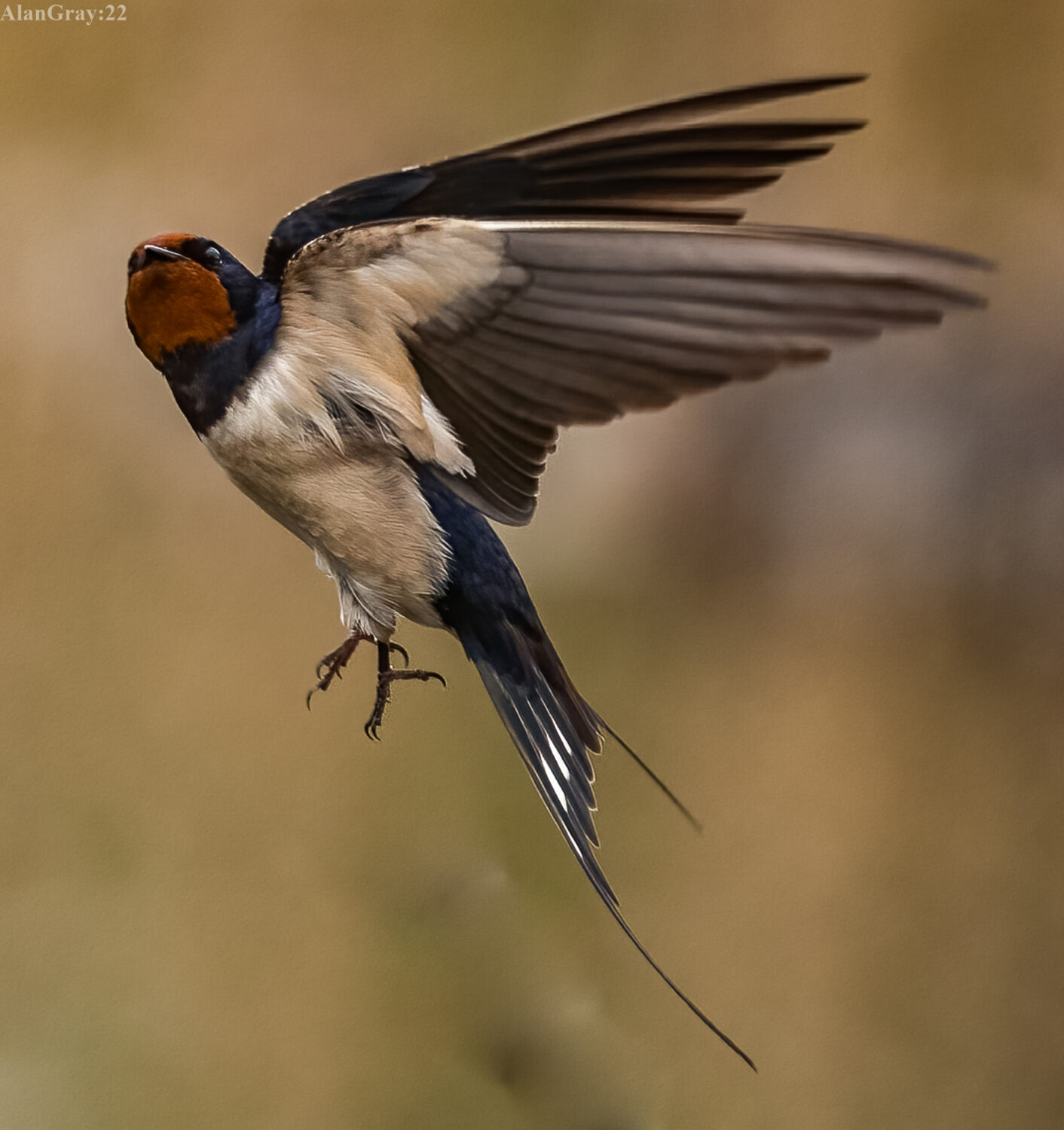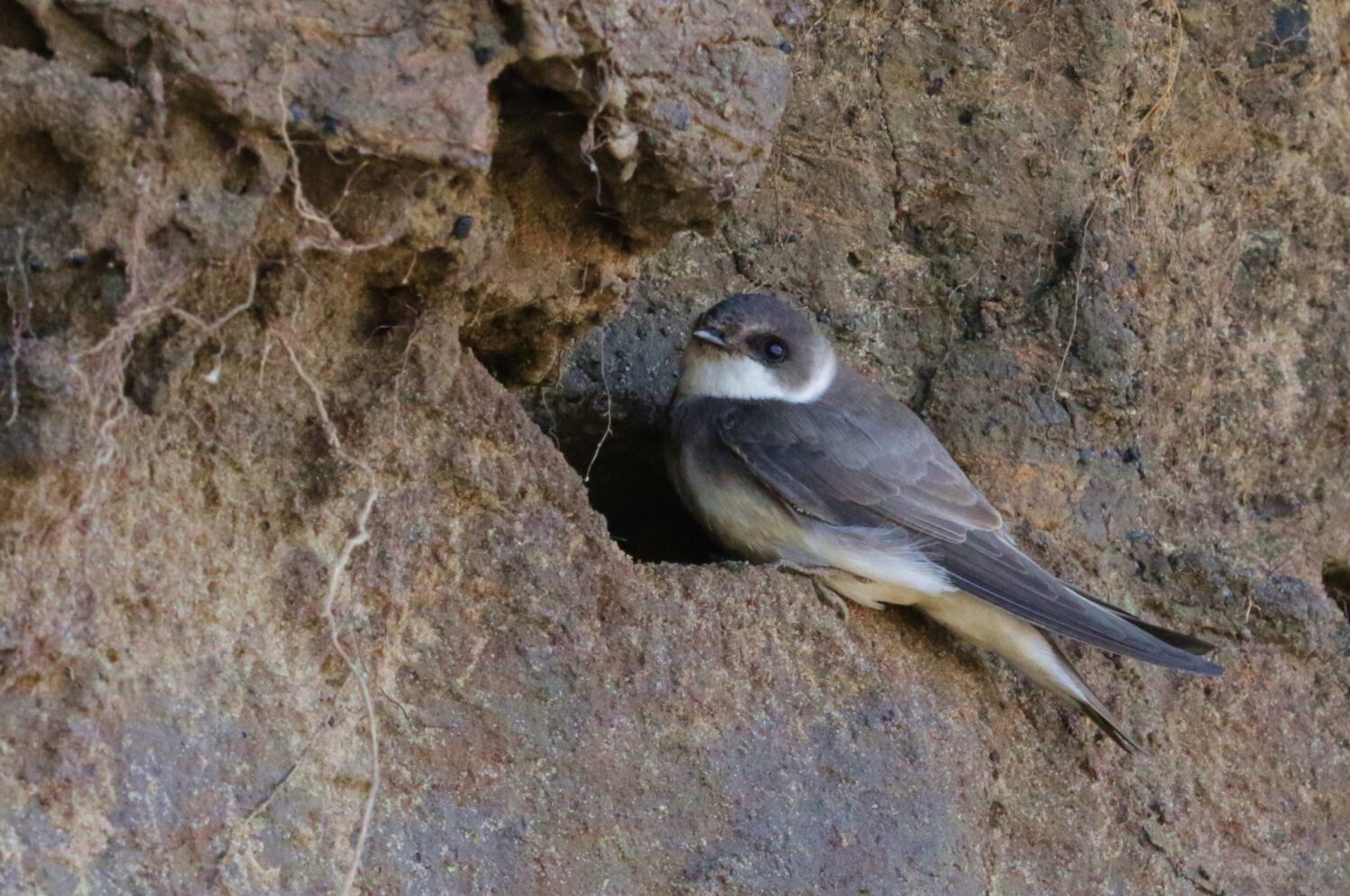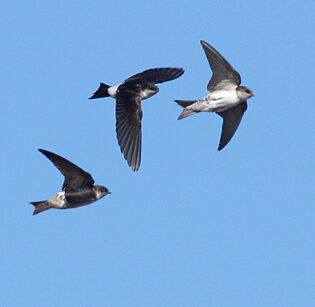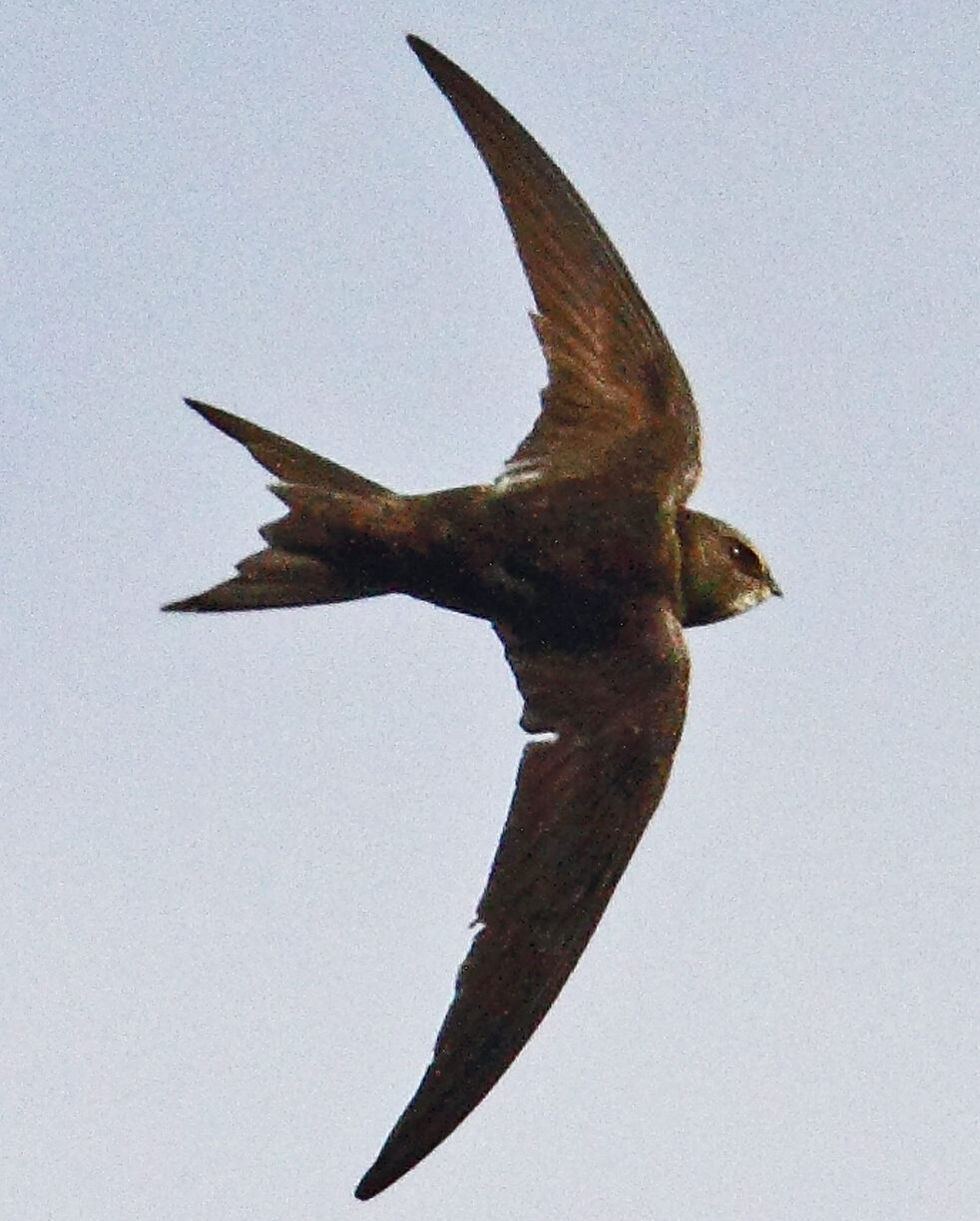Learn how to differentiate between Swallows, Swifts, House and Sand Martins in a new blog by NHSN Naturalist, Ho-Yin Wong
A much-loved sign of spring is the arrival of Swallows, Sand and House Martins which, are collectively known as hirundinids. Along with the Swift, these birds migrate to the UK from Africa to breed. These birds are among some of the masters of aerial acrobatics, flying at great speeds over bodies of water and fields in search of insects. Their speed and agility can make identifying them challenging. In this blog, you will hopefully learn about some of their key identification features, helping you to ID them in the field.

Swallow
Perhaps the most distinctive of the four, the Swallow has a characteristic long and forked tail, as if it is sporting a tailcoat tuxedo. They have a white underside and a dark red throat, a key feature which separates it from the other hirundinids and the Swift. Swallows will nest under the eaves of buildings, building a nest made of mud.
Swallow © Alan Gray

Sand Martin
Sand Martins are small birds which are brown from above. They have white undersides broken up by a brown collar. Their tails are very short, unlike that of the Swallow and Swift. You will often find Sand Martins by the high, vertical banks of rivers or old quarries, where they excavate a burrow in the sand in which they nest and breed.
Sand Martin © Edward Appleby

House Martin
Unlike the Sand Martin, the House Martin sports a blue-black upper back. It has a distinctive white patch on its upper parts, between the back and tail, making it a key feature to look out for to distinguish it from Sand Martins. Like the Swallow, the House Martin nests under eaves of buildings, with nests built from mud.

Swift
Due to its silhouette and speedy flight, the Swift can easily be mistaken to be one of the hirundine. It has a forked tail, longer than that of the martins, but shorter and less narrow than that of the Swallow. It is a much stockier bird than the others mentioned so far. A largely brown bird, with wings that sweep back, forming a distinctive crescent shape as it swoops down and above water, giving the Swift the look of a scythe.
The Swift also makes their nests under roofs and within crevices of rocks. Unlike the other birds, they don’t rely on building nests made of mud. Instead, it utilises materials that can be gathered in the air, like feathers, straws, and hay. This is because, unlike the Swallow and Martins, the Swift spends its entire life in the air, feeding and sleeping. Only landing on its nest during the breeding season to incubate and feed their chicks.
Swift © Peter Fawcett